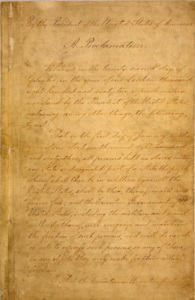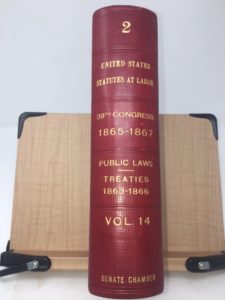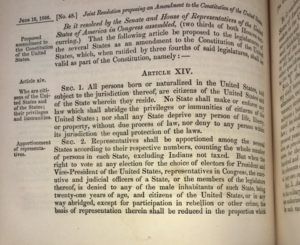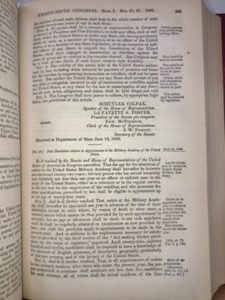In honor of MLK Day, StatutesandStories.com is pleased to provide links to arguably the three most important Civil Rights laws adopted as a result of the Civil Rights movement:
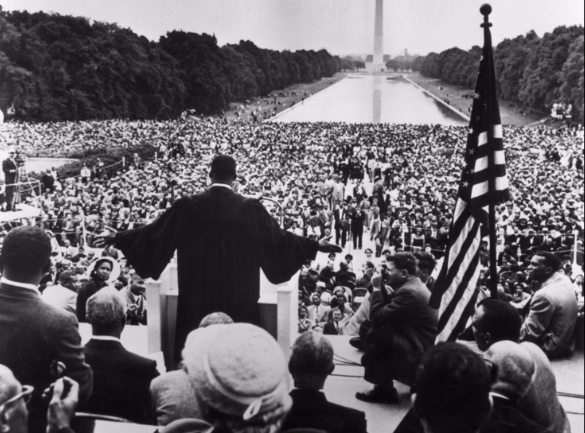
The Civil Rights Act of 1964 is known as the “Child of the Storm.” Click here for a link to 78 Stat. 241, enacted on July 2, 1964.
The ’64 Act outlawed segregation by private businesses, including restaurants, hotels and theaters. The ’64 Act also banned employment discrimination and outlawed segregation in public accommodations such as swimming pools, libraries, and public schools.
A year earlier President Kennedy had agreed with Martin Luther King that legislation was necessary. In a televised Report to the American People on Civil Rights of June 11, 1963, President Kennedy called for a law “giving all Americans the right to be served in facilities which are open to the public—hotels, restaurants, theaters, retail stores, and similar establishments” in addition to “greater protection for the right to vote.”
The law was adopted in the House on February 10, 1964, but faced vocal opposition in the Senate. The “Southern Bloc” of 18 southern Democratic Senators led by Robert Byrd (D-WV) and Strom Thurmond (D-SC) filibustered for 54 days. Senators Hubert Humphrey (D-MN), Mike Mansfield (D-MT), Everett Dirksen (R-IL) and Thomas Kuchel (R-CA) eventually succeeded in breaking the filibuster on June 10 with substitute legislation that attracted enough moderate Republican votes to join core liberal Democrats.
Ultimately, the final vote to end the filibuster was 71 to 29, making history as the first time that the Senate had ever been able to end a filibuster of a civil rights bill. The vote for cloture (ending the filibuster) was 44 Democrats and 27 Republicans against 23 Democrats and 6 Republicans.
During the vote, terminally ill Senator Clair Engle from California was wheeled into the Senate chamber. Unable to speak because of a brain tumor, Senator Engle pointed to his eye to signify his Yes (aye) vote. On July 2, President Johnson signed the bill into law in a nationally televised ceremony.
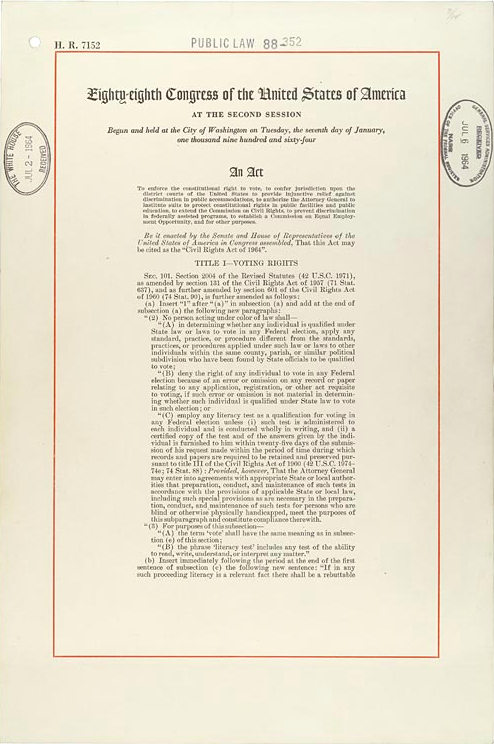
The Voting Rights Act of 1965 is referred to as the “Crown Jewel.” Click here for a link 79 Stat. 437.
The Fair Housing Act of 1968 has been labeled the “Voice of Justice.” Click here for a link to 82. Stat 73.
Copied below is a picture of Martin Luther King meeting with President Johnson on January 18, 1964. (Lyndon B. Johnson Presidential Library, National Archives). Here is a link to the National Archives’ commemoration of Black History Month, which includes several historic pictures and items from the archives.
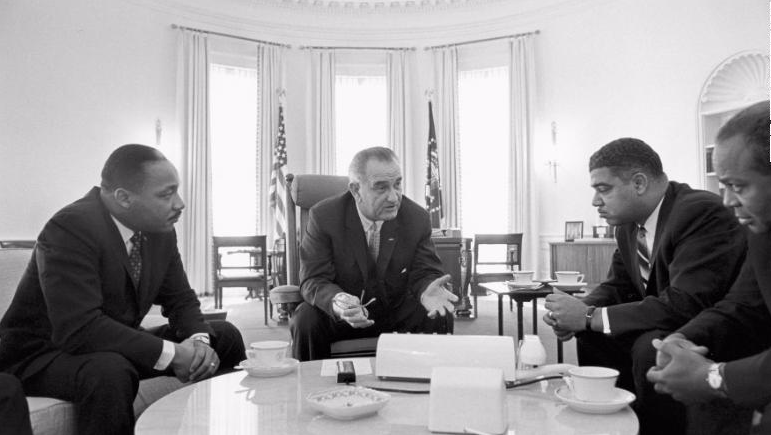
The additional blog entries listed below run the gamut from the Fugitive Slave Act of 1793 (which implemented the fugitive slave clause in the Constitution and created an enforcement mechanism demanded by the South) to the Civil Rights Act of 1866 (the country’s first civil rights law).
The bitter struggle between northern abolitionists and southern pro-slavery supporters (“fire eaters”) is illustrated by the northern PERSONAL LIBERTY LAWS that were adopted as a means of resisting the Fugitive Slave law. Leading up to the Civil War, members of Congress battled over Congressional anti-slavery petitions, which were forced to be tabled by the HOUSE GAG RULE.
For more background about the pernicious roots of the institution of slavery – a word which is not mentioned in the constitution – readers are invited to examine a recent post about THE FUNDAMENTAL CONSTITUTIONS OF SOUTH CAROLINA, JOHN LOCKE AND THE SLAVE CODE OF 1740.
While slavery was outlawed by the 13th Amendment, the practice of debt servitude continued into the 20th Century, where it was a theme of the Civil Rights movement. The early efforts to outlaw involuntary servitude began with the PEONAGE ACT OF 1867, which also applied to enslaved native American populations in the American South West.
On September 22, 1862, President Lincoln provided notification that he would be issuing the Emancipation Proclamation, effective January 1, 1863. Pictured below is an original copy held at the National Archives.
Copied below is a list of blog entries of interest which demonstrate how far we have come, keeping in mind that the struggle for Civil Rights never ends:
1793 – FUGITIVE SLAVE ACT OF 1793
1807 – ACT PROHIBITING THE IMPORTATION OF SLAVES
1834 – HOUSE GAG RULE , ANTI-SLAVERY PETITIONS, AND “OLD MAN ELOQUENT”
1866 – CIVIL RIGHTS ACT OF 1866 (1st Federal civil rights law)
1867 – PEONAGE ACT (an attempt to outlaw debt servitude)
THE FUNDAMENTAL CONSTITUTIONS OF SOUTH CAROLINA, JOHN LOCKE AND THE SLAVE CODE OF 1740
PERSONAL LIBERTY LAWS – examples of Northern resistance to the FUGITIVE SLAVE LAW
ALEXANDER HAMILTON AND THE ABOLITION OF SLAVERY IN NEW YORK
Pictured below are copies of the 14th Amendment, which made all persons born or naturalized in the U.S. citizens of the U.S. and of the state of their residence. In so doing, the 14th Amendment reversed the infamous Dred Scott opinion from 1857, which is universally recognized as one of the worst Supreme Court decisions in American history.
